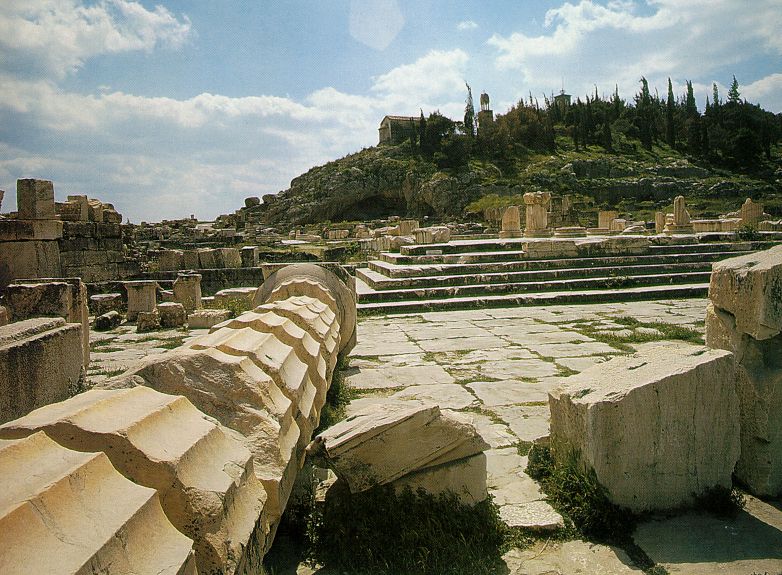The Greek Mysteries are the most visible to historians but all cultures had their own Mystery Center(s).
Well known are many the leaders of Greek Mystery Centers such as Pythagoras and Heraclitus.
And well known are the mystery centers Cabeiri on the islands of Lemnos, and Eleusis in west Attica, about 12 miles from Athens. Mysteries known as Dionysian, Eleusinian, Orphic, and others are well known to historians. Many an emperor wished to be initiated, thus some of these Mysteries formed a Lesser Mystery appropriate for the unprepared while the original remained secret as the Higher Mystery. Anyone who attempted to reveal a higher mystery forfeited their life.
A veil of secrecy concealed the manner whereby spiritual needs were satisfied for those within the older civilizations who sought a deeper religious and cognitive life than was offered by the religions of the people. “We are led into the obscurity of enigmatic cults when we inquire into the satisfaction of these needs. Each individual who finds such satisfaction withdraws himself for some time from our observation. We see that the religion of the people cannot give him what his heart seeks. He acknowledges the gods, but he knows that in the ordinary conceptions of the gods the great enigmas of existence are not disclosed. He seeks a wisdom which is carefully guarded by a community of priest-sages. He seeks refuge in this community for his striving soul. If the sages find him mature they lead him step by step to higher insight, in a manner hidden from the eyes of those outside. What happens to him now is concealed from the uninitiated. For a time he appears to be entirely removed from the physical world. He appears to be transported into a secret world. — And when he is returned to the light of day a different, entirely transformed personality stands before us. This personality cannot find words sufficiently sublime to express how significant his experiences were for him. He appears to himself as though he had gone through death and awakened to a new and higher life, not merely figuratively, but in highest reality. And it is clear to him that no one can rightly understand his words who has not had the same experience.
Thus it was with those persons who through the Mysteries were initiated into that secret wisdom, withheld from the people, and which shed light upon the highest questions. This “secret” religion of the elect existed side by side with the religion of the people. So far as history is concerned, its source fades into the obscurity where the origin of people is lost. We find this “secret” religion everywhere among ancient people insofar as we can gain insight concerning them. The sages of these people speak of the Mysteries with the greatest reverence. — What was concealed in them? And what did they reveal to one who was initiated into them?
The enigma becomes still more puzzling when we realize that at the same time the ancients regarded the Mysteries as something dangerous. The way leading to the secrets of existence went through a world of terrors. And woe to him who tried to reach them unworthily. — There was no greater crime than the “betrayal” of these secrets to the uninitiated. The “traitor” was punished with death and confiscation of property. We know that the poet Aeschylus was accused of having brought something from the Mysteries to the stage. He was able to escape death only by fleeing to the altar of Dionysus and producing legal evidence that he was not an initiate.” [Rudolf Steiner, Christianity as Mystical Fact]
Flowing out of the Mystery Centers were stories for the general population to help shape evolution, especially the evolution of consciousness. These include the stories of Demeter and Persephone, Prometheus and Heracles, Jason and the Argonauts, Theseus and the Minotaur, and from Egypt: Isis and Osiris.
An entry in Wikipedia claims “Christian Mystery” is used in Eastern Christianity to refer to what the Western Church currently calls Sacraments. This writer goes on to reveal that the seven sacraments were defined for the Western Church at the Council of Trent that took place 1545-1563. For the gospel writers, use of the term “mystery” refers to The Mysteries: both the ancient Mysteries and the new Mysteries. It likely was taught in early Christian circles that the ancient Mysteries led to the Mystery of Golgotha. These ancient mysteries were necessary to prepare humanity to understand this central mystery for humanity. Following the Mystery of Golgotha, the New Mysteries of the future could begin – and these, to begin with, were enacted no longer secretly within the Holy of the Holies, but in public during the Mass. As Christ had initiated Lazarus in public, so now the mysteries came out of hiding. The sacraments are indeed part of the new mysteries. But the soul mood of the participants must be prepared to receive. A mood of sacredness must prevail to receive. For centuries, it was felt that one should come clean, that is confess all sins, before receiving the Eucharist.
